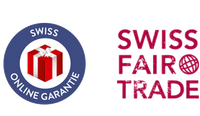Egon Schiele (Austrian, born 12 June 1890 in Tulln an der Donau - died 31 October 1918 in Vienna) was a key figure in Austrian Expressionism. Despite his short career, his prolific output helped pave the way for the modernist movement. He is best known for his figurative work: self-portraits and portraits that reflect a deeply personal and radical style.
Schiele began his artistic career at the Academy of Fine Arts in Vienna in 1906. He ... Voir plus >
Egon Schiele (Austrian, born 12 June 1890 in Tulln an der Donau - died 31 October 1918 in Vienna) was a key figure in Austrian Expressionism. Despite his short career, his prolific output helped pave the way for the modernist movement. He is best known for his figurative work: self-portraits and portraits that reflect a deeply personal and radical style.
Schiele began his artistic career at the Academy of Fine Arts in Vienna in 1906. He left the Academy in 1909 to found the Neukunstgruppe, which was the group for Art Nouveau, with his classmates who disapproved of the school's programme. It was at this time that Schiele came into contact with Gustav Klimt, Schiele's future patron and mentor; Klimt helped Schiele to participate in the Kunstschau in Vienna (International Exhibition of Fine Arts) in 1909.
In 1912, Schiele established his studio in Vienna. He was extremely productive at this time and his exhibitions were international and national in scope, the most notable being the 1914 exhibition at the Guido Arnot Gallery in Vienna. After only 10 years in the limelight, Schiele succumbed to Spanish flu at the age of 28 on 31 1918. However, Schiele was able to recover thanks to the Vienna Secession of 1918, which exhibited more than 50 works of art and brought him fame and recognition with, for example, The Embrace and Self-Portrait with Hands Clasped on Chest.
Voir moins






